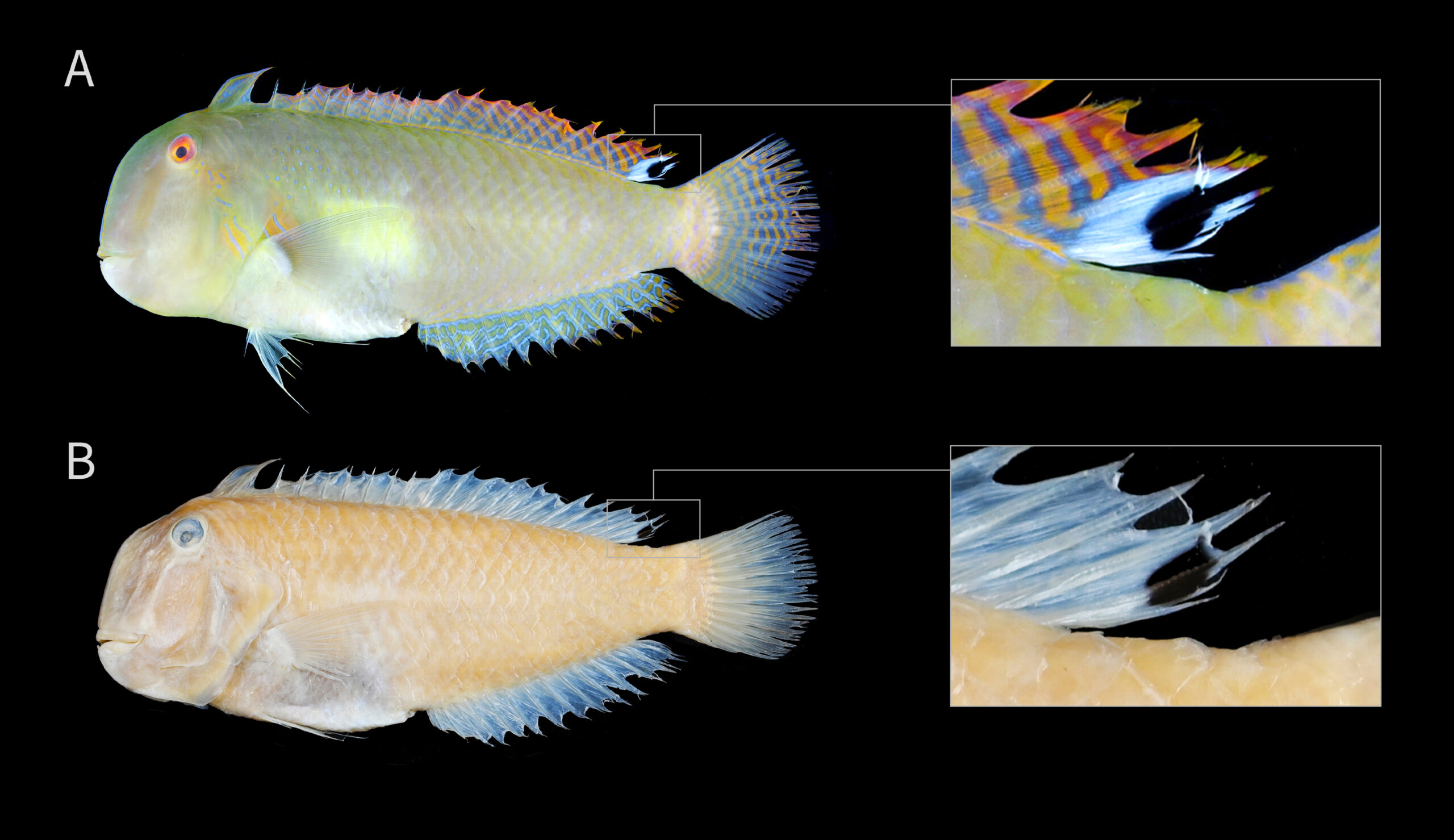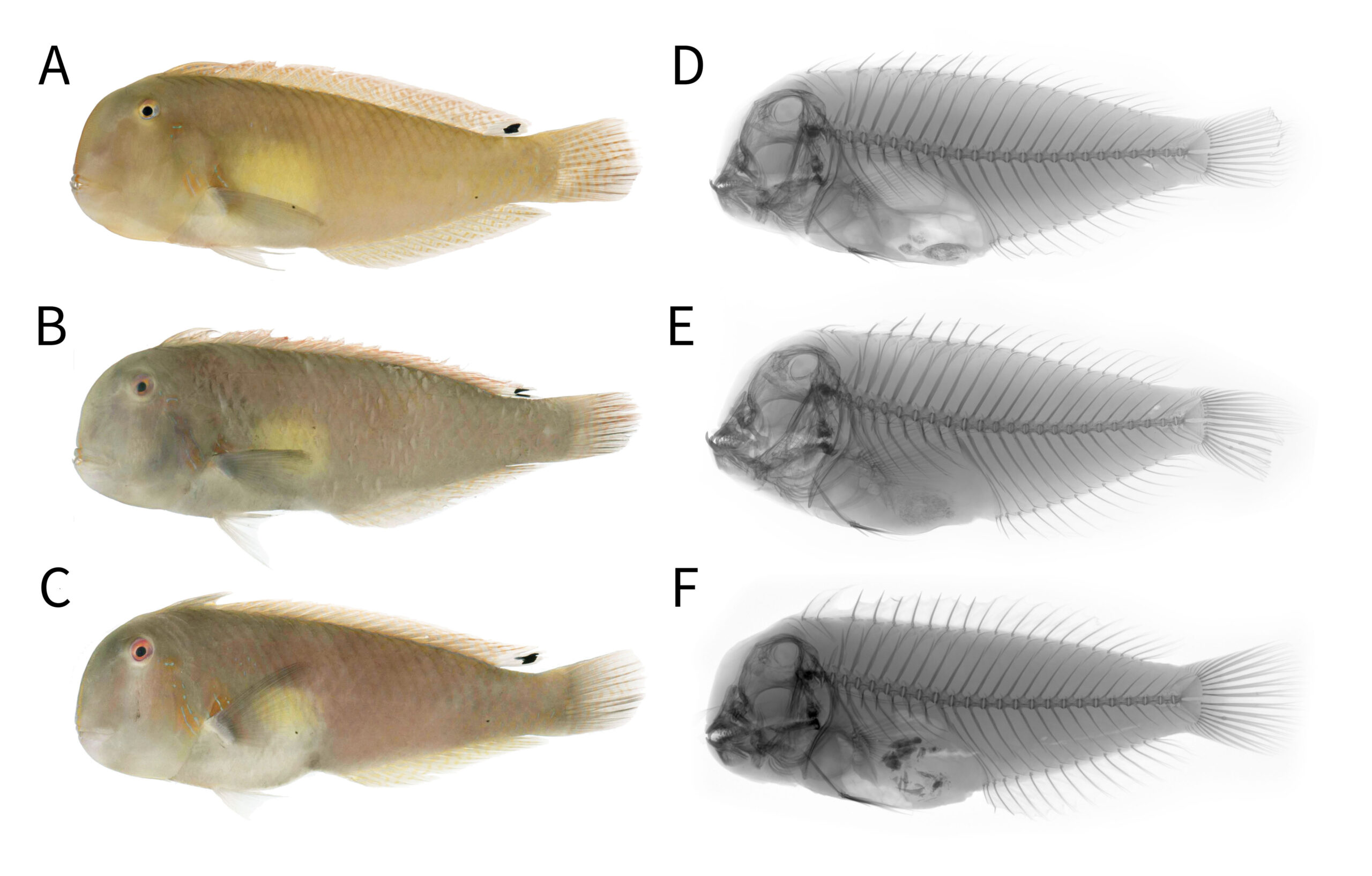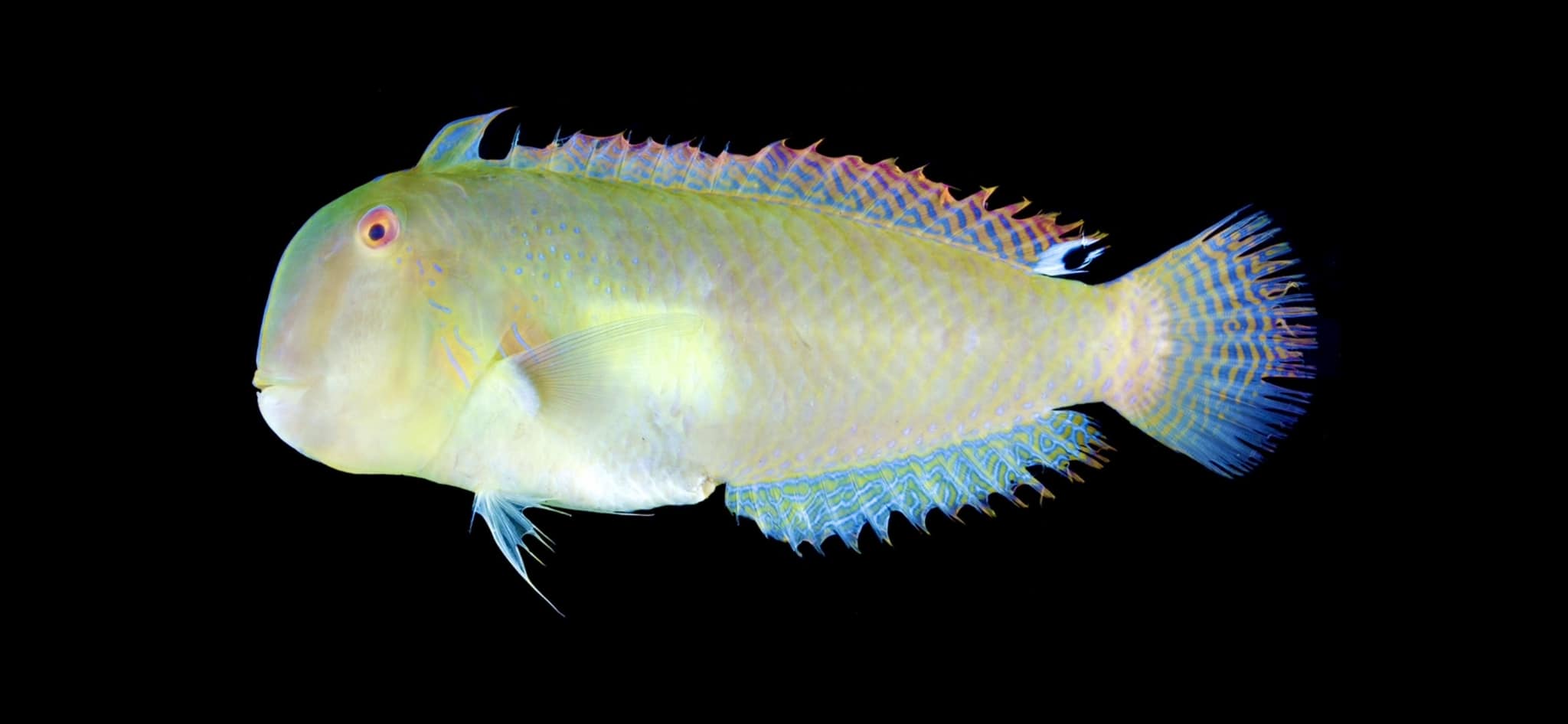New species can be discovered through a multitude of avenues, from thrilling expeditions in faraway places to the loud hustle and bustle of wet markets, or even the quiet halls of museum collections. More often than not, careful examination of existing material can yield unexpected surprises, as is the case of Iniistius bakunawa, a new species of Razor Wrasse hiding in plain sight.
Razor Wrasses are medium to large fishes found throughout the Indo-Pacific region. They are lesser known to aquarists, but elsewhere in the world are an important source of food for artisanal fishing communities. They are masters of wide sandy plains, and unlike their reef-inclined cousins, are rarely found in coral reefs.

coloration. Below in preservation. Note the disappearance of the white margin of the posterior ocellus in preservation. Photographs by Hiroyuki Motomura and Yi-Kai Tea.
The wide sandy expanse is an unforgiving environment. With practically nowhere to hide, Razor Wrasses rely on speed and one peculiarity that sets them apart from all other wrasses–their ability to sand dive. While sand-diving is a common strategy employed by many wrasses, few do it with the finesse displayed by Razor Wrasses. Their highly compressed bodies and almost blade-like predorsal ridges allow them to slice through the sand like butter, propelling them in between the grains effortlessly.
In addition to their sand-slicing prowess, Razor Wrasses gain secondary protection through camouflage. Juveniles employ protective mimicry by mimicking dead leaves and other floating debris. Very small juveniles are particularly convincing, adopting a languid, wafting style of swimming with their prolonged anterior dorsal-fin spines lending to a highly irregular silhouette. This method of crypsis is lost in adults, who instead adopt modest colors often with pale reflective scales to match the sandy habitats in which they frequent.
Because of their preference for sand channels and rubble patches away from coral reefs, Razor Wrasses are often overlooked by divers and collectors, and as such the biology and taxonomy of razor wrasses are poorly known. Consequently, the representation of these fishes in museum collections is similarly depauperate.

Such is the case of Iniistius bakunawa, the newest species of Razor Wrasse described from seven specimens obtained in public fish markets of the Philippines, and two trawl specimens from deep channels of Western Australia. The new species is highly distinctive in having a pale jade green body with a large concentric black and white ellipsoid ocellus on the posteriormost edge of its dorsal fin.
The species is named after the Bakunawa, a draconic creature in Visayan mythology said to have caused an eclipse by devouring the moon. The name was given in reference to the eclipse-like marking on the dorsal fin, which is reminiscent of a total solar eclipse. The white margin disappears when preserved in alcohol, further alluding to the ephemeral nature of eclipses.
New species of fishes continue to be described annually, some from colorful adventures, others from unexpected places like a public market on a humid noon in April. Much remains to be explored about these wrasses and other fishes that live in seemingly barren areas.
Their presence in wet markets and artisanal fish landing sites speaks to the diversity of fisheries in the Coral Triangle, which makes“basic” research such as taxonomy even more important to better understand how we can manage our natural resources. At the end of the day, we are still gnawing at the surface of the astounding diversity surrounding our coral reefs, and who knows, a species completely new to science might be on your dinner plate as we speak.
More info
https://lkcnhm.nus.edu.sg/publications/raffles-bulletin-of-zoology/volumes/volume-71/



